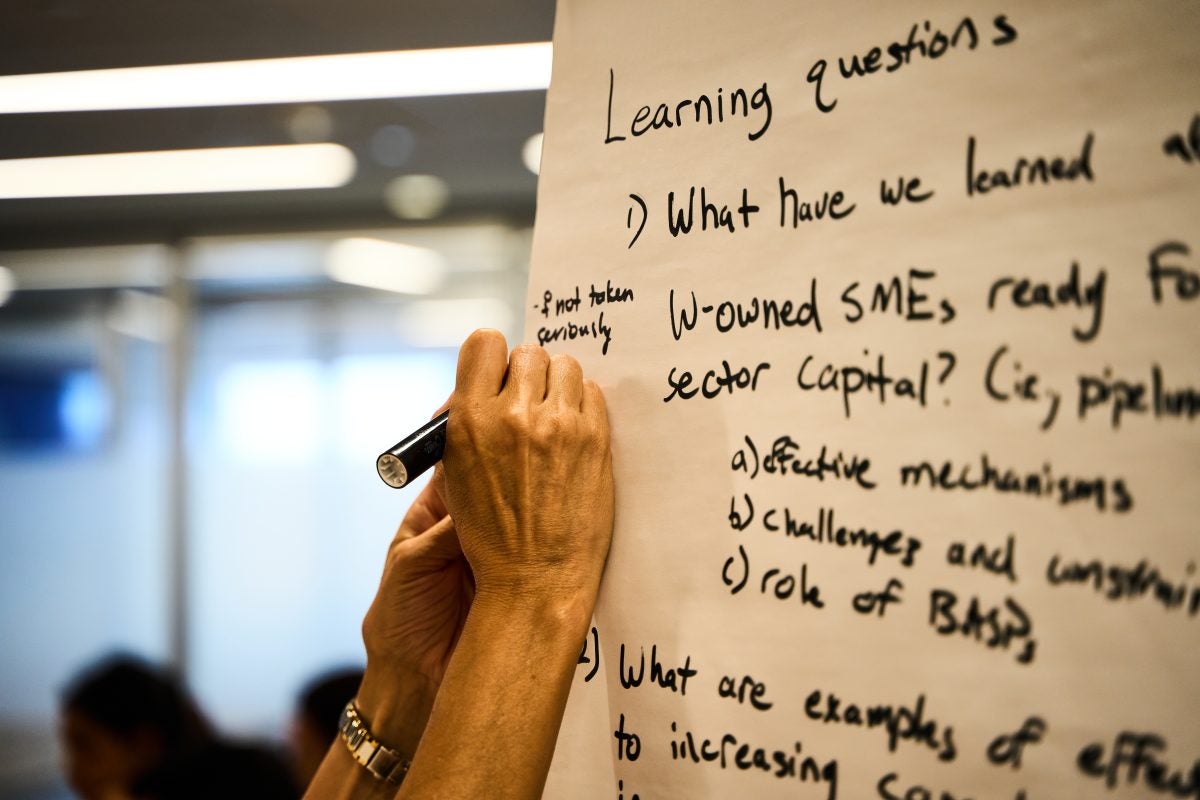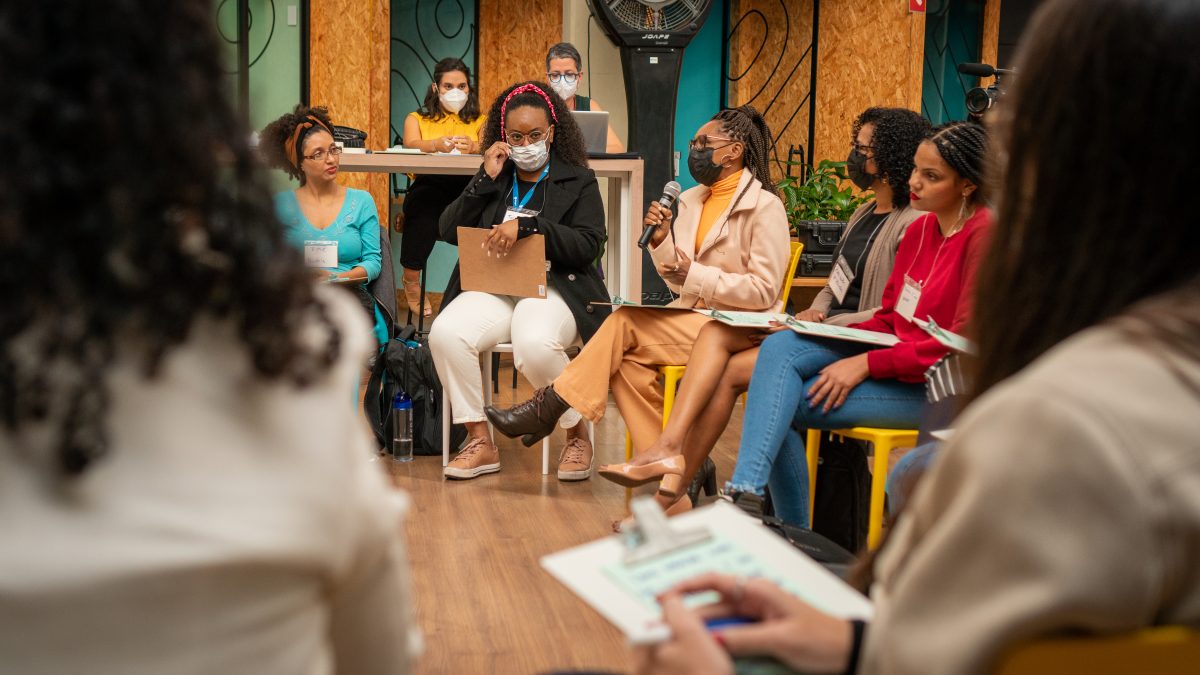In August of 2022, the United Nations released a series of reports on the progress of the Sustainable Development Goals. This series included a gender snapshot which noted that at our current rate of growth, without targeted investment, gender equality will take nearly 300 years. While the challenges to reaching gender equality are immense, women’s entrepreneurship is a key stepping stone to securing economic independence for women globally and ensuring women have a meaningful role to play in the global economy. Shortly following this report’s publication, the Aspen Network of Development Entrepreneurs (ANDE) and the U.S. Agency for International Development’s (USAID) INVEST AND CATALYZE programs convened seventy-five thought leaders at the Aspen Institute’s Washington, D.C. office. The half-day event intended to offer a space for these individuals, whose work focuses on investing in women through a myriad of approaches, to share what has been effective and what has fallen short when addressing the unique challenges women entrepreneurs face in their pursuit of equitable financing and growing their businesses.
By identifying and addressing existing structural inequalities, USAID’s Gender Equality and Women’s Empowerment Hub is investing in the economic empowerment of women to build more resilient communities and countries. Through organizational initiatives like CATALYZE and INVEST and key partnerships, like that with ANDE, USAID is collaborating with trailblazers to ideate and implement innovative approaches to tackle systemic barriers and build equitable funding structures. With this thoughtful programming, we collectively aim to spur sustainable change in the lives of women globally.

At the core of USAID is a shared goal for supporting women’s long-term economic growth on a global scale. The event stemmed from conversations to coordinate efforts and share learnings in order to break down silos and achieve this sustainable change. The event fell on the margins of ANDE’s Annual Conference, bringing in a number of women entrepreneurs, locally led business advisory support providers, and a variety of financial institutions to foster a dynamic conversation. From the start, it was abundantly clear that for any solution to move the needle forward, it would need to be co-created by all relevant stakeholders. The notion of one sided initiatives leading to a demonstrable impact is unlikely. Partners shared examples of successful programs that came from an ecosystem of partners coming together to create solutions. ANDE’s Gender Equality Action Labs aimed to do just this through employing an inclusive participatory design approach to ideate and prototype solutions to the systemic gender inequities in the SGB sector. These action labs brought in those who directly interfaced with women entrepreneurs and those at a higher level looking to fund them. Eleven projects stemmed from these action labs and while only at their midpoint, these co-created outputs have already impacted more than 500 women entrepreneurs.

Another key point of discussion revolved around the notion that traditional training on financial skills is not the only solution to equipping women with the skills needed to tackle the financing gap. Empowering women entrepreneurs to pitch their ideas with a positive lens can help them overcome the professional confidence gap. When pitching their businesses, women entrepreneurs often note the shortcomings of their business ideas far sooner than their potential. Within the first round of ANDE’s Advancing Women Empowerment Fund, Property Point, developed a program to work with nearly 50 South African women entrepreneurs on their elevator pitches. They shared tips on how to best position their businesses by crafting a pitching statement that highlighted the potential of their idea and their strengths. This pre-investment support ultimately unlocked funding of over $180,000 with an additional potential pipeline of $2 million.
While capacity development of women entrepreneurs has been at the forefront of spurring women’s economic growth for the past decade, participants also highlighted the need for intermediaries and investors to make operational changes that take into account women’s diverse needs. These changes can be accomplished by ensuring representation and diversity of voices within the internal processes of investors and intermediaries. Within ANDE’s Pay for Results Facility and Capacity Building Facility, nine organizations are taking different approaches to further develop their systems and processes to take a more holistic gender lens approach to investment. One of these partners, Insitor, is exploring how to formally integrate gender into their policies and positions. Fundamentally, there is a tipping point between fund managers seeing investment in women-led businesses as an initiative versus a key pillar of their investment thesis. Moving forward, funds and financial institutions must take their commitment to gender equality further.
This is the first post in a jointly produced three-part blog series entitled, “What’s Working in Supporting Women’s Entrepreneurship?” produced from the discussions at the September 12th learning event hosted by ANDE. Read part two on The Supply and Demand Challenge from INVEST, and part three on Making the Gender Lens Investing Case from CATALYZE. Collectively, this series covers the sectors’ success stories and how to recreate their structures to shift purposeful investment into what works, fostering women’s economic growth, and affirming their indispensable role in economic development.
